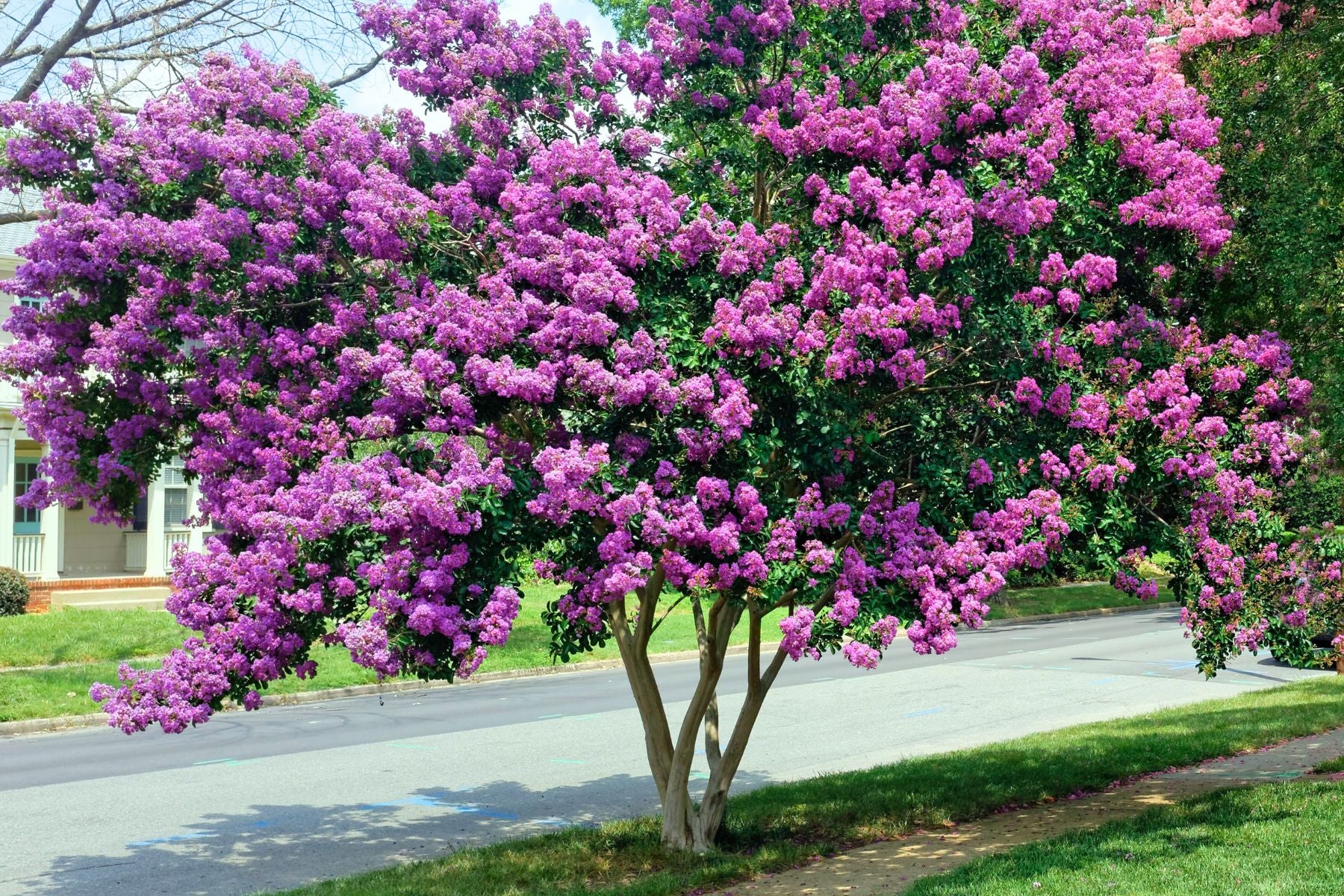Landscaping is an essential part of increasing your home’s overall value and curb appeal, but it’s not always easy to know where to start. Trees are excellent additions to any property, as they may add color, value, sweet aroma, fruit, and more. If you want to plant one of the most beautiful flowering trees in your yard, you should consider a crape myrtle; they can be many shades of white, red, pink, and purple. Follow along for five tips to help you care for crape myrtle trees.
Plant Them in the Sunlight
It’s no secret that sunlight is one of the most important factors when it comes to growing plants, trees, and flowers, and crape myrtles are no exception. These gorgeous trees need full or at least partial sun exposure to thrive at their full potential. Because crape myrtles are prone to mildew issues, sunlight is crucial for keeping them healthy. Additionally, their blooms may not be as prolific in full or partial shade.
Avoid Overfertilizing
Fertilizer is important for tree growth, but crape myrtles don’t need excessive amounts. Also, it would be best to fertilize these trees only during the growing season. If you want to encourage flower brightness and increased blossoms, a slow-release fertilizer option with equal parts potassium, nitrogen, and phosphate is the best choice. Excessively fertilizing a crape myrtle may encourage more leaves to grow than flowers—avoid overdoing it.
Prune Occasionally
Pruning is one of the best ways to encourage new growth for most trees, but crape myrtles don’t need much pruning. However, you can remove dead or tangled branches, tree suckers, and odd shapes in late winter or early spring to maintain the best and most beautiful crape myrtle. The best growth comes from new wood, but over-pruning is possible.
Use the Right Soil
Crape myrtles are excellent trees because they’re relatively low-maintenance and don’t have complicated requirements. In fact, most can tolerate multiple soil pH levels, but neutral or slightly acidic soil is best. However, crape myrtles need well-drained soil, as they’re susceptible to root rot and other fungal diseases.
Don’t Overwater Them
Even though water is crucial for plant and tree growth, crape myrtle flowering trees are somewhat drought resistant. They need daily watering to establish a strong root system for the first few weeks after planting them. However, you don’t have to continue this regimen after the first month—just make sure the soil is somewhat moist around the base of the tree.
After learning a few tips to help you care for crape myrtle trees, you can nourish these stunning flowering wonders. Adding color to your property is great for your curb appeal, and crape myrtles are a perfect way to make your yard bold and bright.


